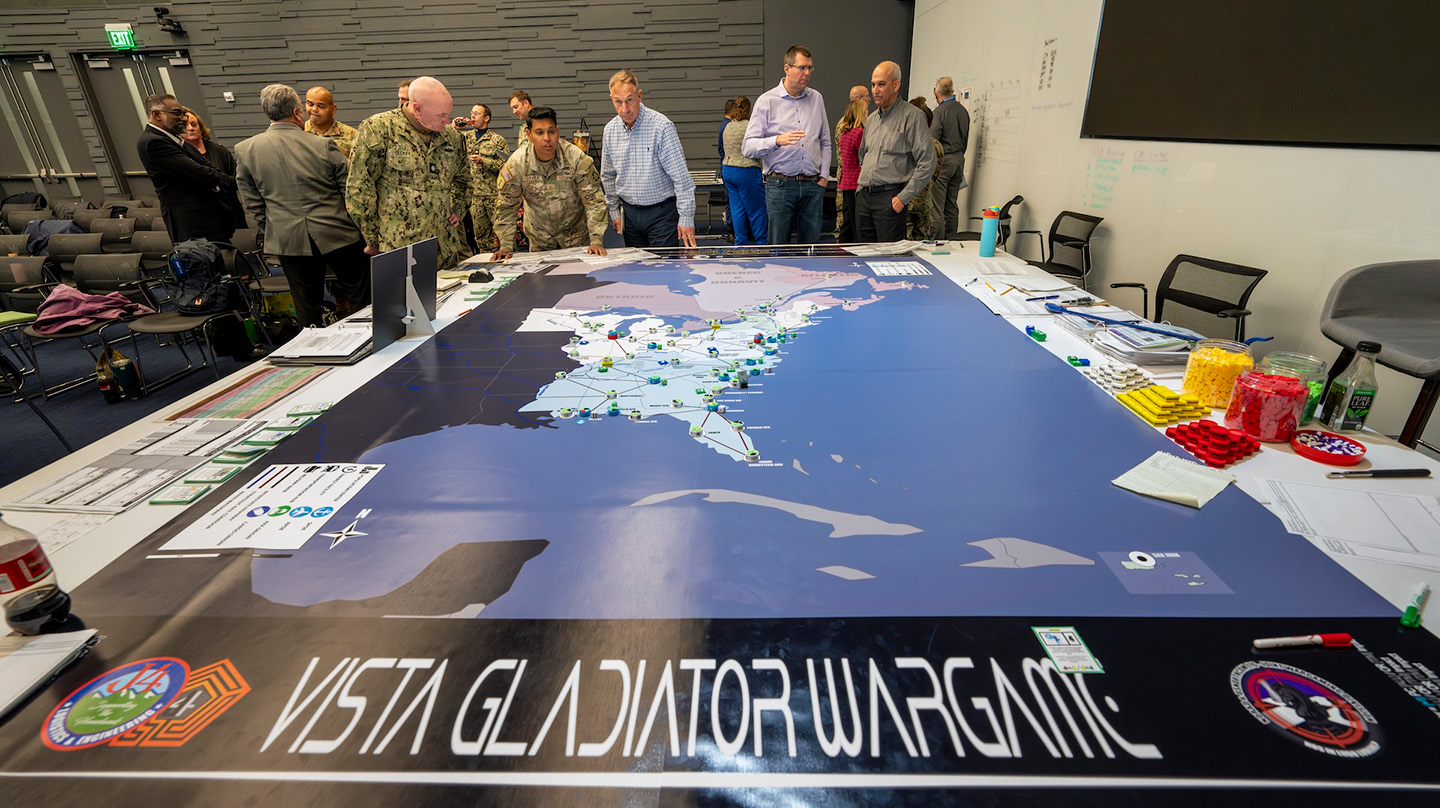News
Johns Hopkins APL Team Applies Expertise to Homeland Defense Wargame
Audio generated using AI voice technology.
A team from the Johns Hopkins Applied Physics Laboratory (APL) in Laurel, Maryland, played a central role in a recent Defense Department wargame that addressed the challenges of protecting logistics infrastructure against growing adversarial threats.
Held at APL and sponsored by the Joint Chiefs of Staff, in partnership with the North American Aerospace Defense Command (NORAD) and U.S. Northern Command (USNORTHCOM), the weeklong Vista Gladiator wargame in January examined the dependence of military critical infrastructure on the private sector, as well as the coordination needed among the military, government agencies and industry partners to secure logistics operations from emerging threats.
Representatives from more than 50 public and private sector organizations took part in the game, outlining ways to prepare for and respond to a range of potential challenges, including adversary threats to infrastructure and supply chains as well as extreme weather events. A main objective was to ensure the agility and survivability of joint force systems, personnel and operations, focusing on such capabilities as supply, maintenance, deployment and distribution, engineering and contracting.
APL expertise was integral to enhancing the technical, scientific and operational realism of the game, including the Lab’s insights on the national security aspects of transportation, food and agriculture, all-hazards and climatological effects, and counter-information operations.
“Homeland defense has become even more critical as the threats have come to our shores in recent years,” said Liz Parkin, manager of the Resilient Critical Infrastructure program in APL’s Homeland Defense Mission Area. “APL can help frame critical challenges from many angles and through the eyes of many military and government sponsors, in ways they may not be able to see from within their own organizations.”
Parkin explained that because the military relies on privately owned infrastructure — think cyber networks, financial systems, utilities, public health and transportation — the game’s scenarios were designed to assess disruption to such infrastructure, especially in ways an adversary might capitalize on vulnerabilities, exploit natural disasters, and create uncertainty and contention among U.S. forces and the public.
Vista Gladiator successfully called attention to gaps in authorities, priorities and funding among partners, Parkin added, and revealed actions for improving national coordination across public and private sectors. This includes planning for the security of vulnerable populations and the impact of that work on the overall response.
“This exercise allows us to practice, explore lines of authority and get problems in front of the right people,” said Air Force Maj. Gen. Constance Jenkins, who heads the Logistics and Engineering Directorate for NORAD-NORTHCOM. “I like to call Vista Gladiator an exercise in ‘contested logistics’; we must be able to defend the nation’s and continent’s critical infrastructure, move commodities and respond to threats in the homeland.”

